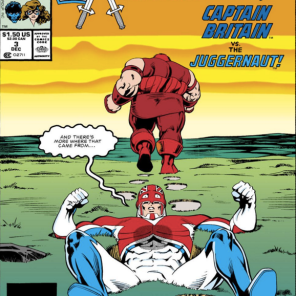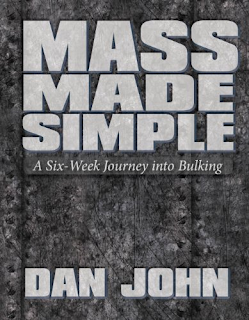Once again, slumming around on the internet benefitted me, for in the course of explaining an idea about training I ended up creating an analogy I’m pretty pleased with and intend to share with you, dear reader. What’s interesting about this is it demonstrates something that we all instinctively “know”, yet are prone to forgetting when it comes time to actually put rubber to the road. Specifically, I am referring to the idea in the title: “you can’t sprint a mile”. We all “know” this. And yes, this WILL require some pedantry to succeed, but you know that’s well within my purview. The very definition OF a sprint is such that it simply can NOT be maintained FOR a one mile duration (for my non-American audience, feel free to substitute kilometer here, the point remains). A sprint is an explosive topspeed full out run that can ONLY last for a short duration BECAUSE of the sheer amount of intensity involved in it. Your heart rate immediately goes into the red zone, lactic acid rapidly fills inside of your muscles, your lungs are on fire, your muscles burn, and you leave it all out there. Athletes will train their entire lives for the sake of covering 100 meters in the span of less than 10 seconds, the cheetah can hold its top speed for 30 seconds, and we see the 400m “sprint” being recognized as the longest distance sprint event for humans, as after we cross that threshold we are in the realm of middle and long distance running. Why am I talking so much about running on a blog that is primarily focused on lifting things (despite the pivot toward “physical transformation” vs “bigger and stronger”)? Because this lesson absolutely applies universally to all matters of physical transformation: we can NOT maintain a sprint for long distances.
This is why the Juggernaut applies a more "slow and steady" approach
Wherein do
we observe sprinting efforts in the realm of physical transformation? It is in those specific efforts TO transform
that we are “sprinters”. The body enjoys
homeostasis. It enjoys it so much that
it will FIGHT to maintain its own status quo.
Transformation is metabolically expensive: either the body must create
new tissue in response to a demand stimulus to do so (through resistance
training) OR the body reduces tissue when there is a demand to do so (typically
in the form of an imposed deficit of nutrition), and in the case of the latter
we manipulate the body to prioritized muscle OVER fat: imagine the degree of
trickery necessary to achieve that outcome!
Thus, in order to trigger these responses, SPRINTING is necessary. A casual jog will not suffice, nor will a
hard running effort: we must employ a sprinting effort in order to create
enough demand upon the body that it determines that maintaining homeostasis is
actually MORE demanding than changing.
When we
observe those protocols effective at achieving physical transformation, we
observe sprints. Super Squats, Mass Made
Simple, 5/3/1 Building the Monolith, Feast/Famine/Ferocity, Deep Water
Beginner, Deep Water Intermediate-all 6 week sprints (both training AND
nutritionally: hello gallon of milk a day/1.5lbs of ground beef and a dozen
eggs a day/a loaf of bread and a jar of peanut butter and jelly in a
backpack/the sheer magnitude of deep water eating). The Velocity Diet? A 28 day sprint. The 10000 kettlebell swing challenge? A 20 day sprint. All of these sprints are absolutely fantastic
at being the catalyst for physical transformation and, in turn, NONE of them
can be sustained indefinitely.
Folks, it's got "Velocity" in the name...just think about it
Dan John
refers to it as “park bench-bus bench”, 5/3/1 has programmed deloads, DoggCrapp
has “blast and cruise” (and, in turn, the blasts of DoggCrapp are ABSOLUTELY
sprints), Super Squats has you alternate between 20 rep squats and 5x5, and
even Deep Water’s advanced phase could be argued to be a period of
non-sprinting, but in all instances, after the sprint comes the rest and
recovery. Why? Because you can’t sprint a mile. And if you TRY to do so, all you get is a
TERRIBLE mile time. What would happen if
you actually attempted to sprint a mile?
You’d burst out of the starting line, blast ahead of all the other
runners…and MAYBE if you’re one of the top athletes in the world, you’d clear
the first quarter of a mile in a little over 40 seconds…and then just flat out
die. Your “sprint” from there would
rapidly descend into a plodding, labored, exhausted death march, the entire
time getting passed by weekend warriors and parents pushing babies in
strollers. In turn, this is why those
who run the 1600m DON’T employ this strategy and, in turn, why sprinters don’t
train this way TO sprint. What do
sprinters do when they train the sprint?
They sprint! And then the rest,
recover, and sprint again. Why? Because to do so is to ensure quality
repetitions OF the sprint, rather than reinforcing poor technique and
performance by attempting to “sprint” while still under fatigue.
So first,
that there speaks to why Easy Strength works (which Dan John can explain much
better in his Easy Strength Omnibook AND Easy Strength for Fat Loss) and it
also explains why the mainwork in 5/3/1 tends to be so light, but in the
context of physical transformation allow me to finally arrive at my original
point: our sprinting efforts can only be maximized when we approach them in a
state wherein we CAN apply maximal sprinting effort. Which means: if we try to sprint TOO long OR
if we try to sprint before we are recovered from the previous sprint, we will
simply be unable to apply a full sprint effort TO the sprint. Instead, we will employ, at best, a fast run,
but realistically even THAT will most likely be beyond our capabilities if we
TRULY sprinted during our sprint.
Most likely at about this pace
This becomes
an issue for those that seek to engage in long sprints: they will find that
their results may be significant at the start, but they rapidly decline, and
quite possibly regress, as time goes on.
The yearlong “bulks” that start off so promising and end with a trainee
resembling a melting candle, 6 month long “cuts” wherein the trainee ends up
with dark circles around their eyes, no muscle on the extremities, and STILL a
spare tire around the waist, and so many other Icarus like stories wherein the
ambition of the trainee simply cannot match the degree of effort necessary to
achieve these ends. There is nothing
wrong with a goal of great physical transformation, it is simply an unfortunate
reality that patience and nuance are necessary in the pursuit of these
goals. That intense drive to succeed is
outstanding, make use of it!...for a short time. And then back down, recover, regroup so that
you can do it again!
For say we
go back to our sprinter attempting his 1 mile race. Let’s say, instead of trying to maintain the
sprint for 1 mile, they sprint until they experience fatigue, begin walking
until they feel recovered and then decide to sprint again? Those in the running “know” may understand
this as the “Galloway Method”, or even simply the “Fartlek” (speed play)
training method, but in either case, once again: the precedent is there. We CAN cover longer distances WITH fast runs
so long as periods of reduced intensity are employed between the efforts as a
means to facilitate recovery. Rather
than trying to maintain a top effort for the entire time, we recognize that we
can actually go faster by GOING SLOWER, for in the periods of slowness we prep
ourselves for maximal speed.
A sentiment expressed by someone who is, by all accounts, a little slow
And hell,
depending on your perspective, one CAN attempt to sprint for long DURATIONS,
but it would have to be done in opposite directions. In Dan John’s “Mass Made Simple”, he speaks
about the significance of starting out lean BEFORE engaging in a mass gaining
protocol, which perfectly mirrors up with Jamie Lewis’ approach in “Feast,
Famine and Ferocity”, which in and of itself effectively contains 2 sprints run
back to back: a 2-4 week protein sparing modified fast during the famine, and 4
weeks of “feasting”. Both are absolutely
sprinting efforts, but run in such opposite directions that it effectively
resets the body in both cases to be prepared FOR the upcoming sprint. I’ve frequently espoused that the value of
the famine is less so about fat loss and moreso about prepping the body to
absorb the nutrients form the upcoming feast.
And THIS principle is also not without precedent: bodybuilders reference
the “post show rebound” as an excellent time for rapid maximal growth, after
going through a HARD period of serious depletion. These folks are cautioned about not
sprinting TOO hard in their regaining, sure, but they are just as equally
cautioned about NOT trying to maintain that competition level of leanness for
any longer than absolutely necessary.
The sprint to leanness has ended: it’s time to cool down before we start
again.
Honestly, I
could keep writing about this. There’s
so many instances and opportunities present to explore this notion. But consider just how much of it is based on
something we all instinctively understand, and realize, in turn, how often
these things can apply to the realm of physical transformation. Take the lessons learned and apply them! Many of these things are universalisms
because the rules that govern the universe apply UNIVERSALLY. Don’t try to sprint a mile: make the most OF
the sprints and then do what it takes to get ready again.

























